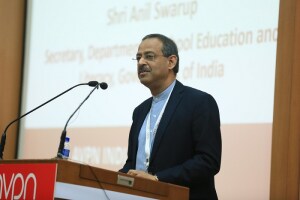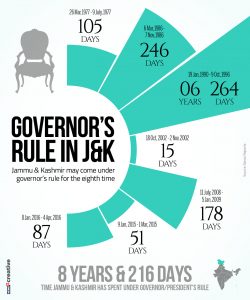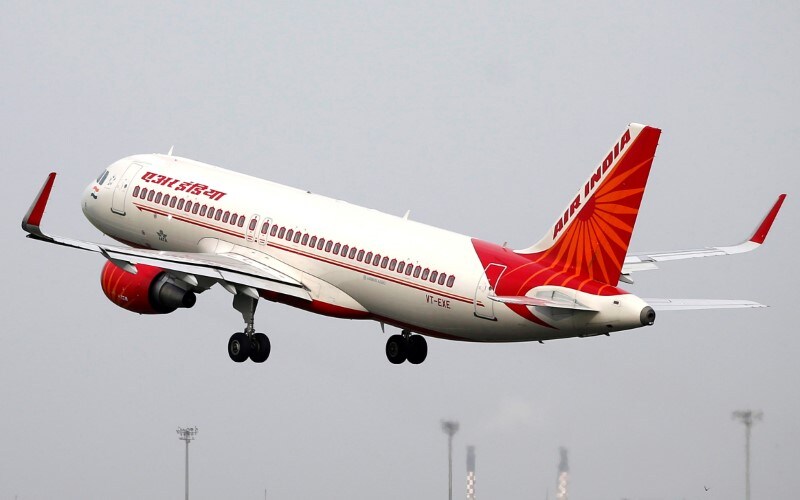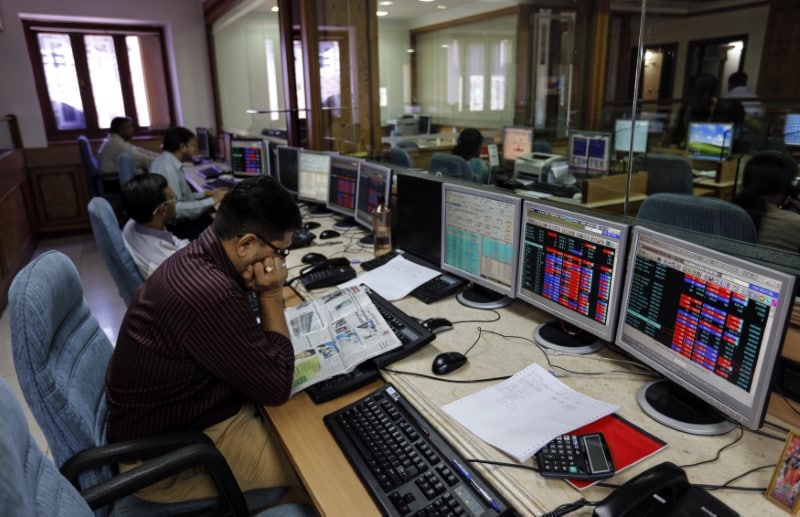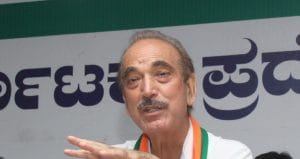Mafia in education system runs deeper than coal sector, says education secretary Anil Swarup

KV Prasad Jun 13, 2022, 06:35 AM IST (Published)
 Listen to the Article (6 Minutes)
Listen to the Article (6 Minutes)
Summary
By bringing digitisation in to coal block auction and making digital portals like DIKSHA for teachers’ training, union education secretary, Anil Swarup, on Friday said that mafia in the education sector runs deeper than that in the coal mining industry.
By bringing digitisation in to coal block auction and making digital portals like DIKSHA for teachers’ training, union education secretary, Anil Swarup, on Friday said that mafia in the education sector runs deeper than that in the coal mining industry.
Swarup, an IAS officer who was also initially the coal secretary, said that partnership between the public and the private sector is the way forward for the country.
Watch: Ayushman Bharat scheme need of the hour, says education secretary Anil Swarup
Talking on lateral hiring by the government, Swarup welcomed the decision and said that 15 specialists is a small component of the entire bureaucracy that works here.
Edited excerpts:
You had a distinguished career. But when you talk to people and ask them about your contribution to the bureaucracy in recent times, it is said you are candid, you are straight talking and you come up with creative solutions. Has that been difficult to be candid, straight talking and yet as you in your words say manage the environment?
If you are candid and straight forward, it’s the easiest thing to do. It is when you are tortuous, things are difficult to do. So, if you are straight, it is much easier. So, I have kept it that way.
You haven’t had to pay for music on account of it?
I compose it.
Let me talk about the Rashtriya Swasthya Bima Yojana (RSBY), because that was your foray into the health sector and the government’s foray also into the health insurance under the United Progressive Alliance (UPA). This in the context of the fact that this government is now looking at launching the Ayushman Bharat scheme, which is touted as being the world’s largest health insurance scheme. What was the experience that the RSBY and how optimistic are you about this Ayushman Bharat Scheme actually getting off the ground?
RSPY was an amazing experience, amazing on count of the fact that we were trying to address issues relating to health of poorest of the poor in the country. They were the deprived lot and one single health event pushed many people into deep poverty and it was in that context, I felt that scheme did make a lot of effort to bring about some change in their lives, give them some assurance in terms of health. It was very challenging assignment, but I enjoyed every moment of it.
About the new scheme, Ayushman Bharat Scheme is the great effort of the government. It is the need of the hour. It has come at the right time. The sooner it gets implemented in the field, the better it is. Because the people in the field need it and they need it at a scale at which it’s being launched. Compared to Rashtriya Swasthya Bima Yojana, the insurance cover was only Rs 30,000 and now it’s Rs 5,00,000, that is fantastic. The coverage is also huge. Certainly, the biggest health insurance scheme in the world and I hope it does well. I am very hopeful given the team that has been brought in and the CEO is an extremely accomplished person.
Somebody who has actually worked with you as a probationer?
Yes, he was with me, but I have kept in touch with him. An absolutely outstanding officer, I wish him well for the scheme.
It will finally boil down to execution on the ground. The second aspect is the involvement of the private sector, something that you have always sort of propagated, but it’s looked at with apprehension. How do you believe you can bridge this trust deficit that prevents public sector scheme from engaging with the private sector to ensure better delivery?
RSPY was a classic example of public-private partnership for delivering to social security scheme. I think that is going to help here as well. First in the terms of price discovery, if you don’t have the private sector insurance companies coming in and bidding, I don’t think the real price discovery will happen. Second, the business conflict between the insurance companies and the hospitals will keep the hospitals in check. Otherwise, the tendency of the hospitals is to charge more. In case, there is a private sector insurance company, the liability of the central government is limited to the premium they would have payed. So, the insurance company will keep the check on the hospitals. That is absolutely important in a country like ours, where they have been cases in the past, where people have been operated for something which was not required.
Now, for a government institution to keep a check on that will be very difficult, because there is no business interest. For insurance company, it is money. So, if there are fraudulent claims being made, they are going to go out of it.
So you believe that it is going to be imperative for the private sector to be involved, whether it is the healthcare schemes of the future or even perhaps a sector like education?
Certainly, I have always believed that the problems of this country can neither be solved only by the government or only by the private sector. There has to be a partnership between the public and the private sector, that is the way forward. That is how we should go.
But what plagued public-private partnership in India. I will ask you this in the context of infrastructure and this goes back to your stint as the head of the project monitoring committee in the UPA in 2013? When you were brought into try and clear that logjam of Rs 22 lakh crore odd that was stuck in project, what plagued public-private partnership, specially when it comes infrastructure in this country?
First it’s distrust. We don’t trust each other. In the public sector, we feel that only we can do everything and the private sector is there to only to make money. The private sector feels that the public sector is corrupt. I think we have to get over it. We have to starting trusting.
Are we getting over it or is it getting worse actually?
RSBY was a classic example where we got over it. In education, we are trying to do it. What has happened in the past year and half is, we have tried to get NGOs onboard. It is having an amazing impact in the field. What happens is the efficiency primarily comes from the private sector, scale comes from the government sector. If two comes together, we can transform the way even social services are delivered. Instead of fighting with each other, if we come to learn from each other, there is a lot of good that is happening in the private sector.
There is a massive good that is happening in the public sector, what gets to be discussed is what is wrong with the public sector, what is wrong with the private sector? I have started this whole nexus of good. The idea of nexus of good is, wherever good things are happening, they should come together, goodness should come together, let goodness grow, that can only happen if we have the courage to appreciate the good work that is happening elsewhere. Unfortunately, the way we are evolving, we tend to be very critical of everything that is happening around us, rather than look for something which is good and which is happening. If it’s happening, let us try and understand why it is happening and how it is happening.
On this issue of bridging this distrust which continues to exists, what can be the practical solution?
Practical solution is to sit across a table and discuss threadbare as to what are the mutual interests, what are the common grounds. The discussion normally centres around the conflict areas, rather than areas of cooperation. Even between two individuals, there will always be conflict areas. The point is where does the discussion start? If the discussion starts with positive, then gradually you can cover the negative part. In project monitoring group what did we do? We setup a system, where we could facilitate things to happen without distrusting the private sector. We said, if you have a genuine problem and we are spending somewhere, let us sit with the department and discuss with them why is it so? The critical point is why of problem. If you understand the why of problem, we leave out the personal biases out of it, go into the issues and try and find a solution.
You think that is the problem not just today, but the problem that India deals with is that both policy makers as well as politicians fail to see the why of the problem. So your solution is not linked to the cause of the problem, you are actually addressing the symptoms?
Wherever, we have managed to find solutions to the problems, we have first tried to understand why it happened. Let me give you an example of coal. In this government, we found the solution because we tried to understand what is the problem of the coal and why is it so? Problem of coal in India was not much of the coal block auctions but was the shortage of coal. Then, you go to why there was a shortage of coal? Shortage of coal was on account of problems in land acquisition, problems in getting environment clearance, problems in getting rakes to evacuate the coal. Then, we go to the next step why was there problem of land acquisition? So, if you go and understand the basis of problem, you can address them as we tried to do in coal. In fact, at some point in time, we had coal sitting in Coal India and there were not many takers.
Are you disappointed that today the situation is very different that we are back to an era of shortfall of coal?
No. I think the production has grown but the demand has grown much more than the supply that is available. Today, the production is more than what it was about a year ago or two years ago, but the demand has gone up. So, we have to look at the demand and see what else can be done. The irony is that we sit on 300 billion tonnes of coal and we are unable to supply coal, which at best would be 800-900 million tonnes requirement. So, there again we have to understand the why of the problem and try and find a solution and I think it can be found.
There was a lot of talk when this government came to office and you were part of that conversation. I remember sitting in your office and talking to you about this plug and play model. Where do things stand as far as this is concerned, where the government would ensure you all clearances, all approvals and you come and basically start your project?
It doesn’t happen that way. It can’t happen that way. There are ideas floated, we discuss it and as we discover that something else needs to be done, to my understanding. I think a better way would be to facilitate clearances and it can be done. Today, technology allows you to do that and that is precisely what we did in project monitoring group. My ultimate objective was that the industry should not be going to any office whatsoever. Today, we have the technology, if we understand the process and digitise everything and make it transparent, people ask me how did you manage to get so many clearances in project monitoring group? Very simple answer – you make things transparent, no matter how inefficient I am to the public, I would like to appear to be efficient, that is one single driver in terms of my clearing the files faster. So, learning from that, in coal ministry, we dispensed with all physical files and papers. In education ministry, we don’t have a single file of papers, everything digitised and so I have all the time in the world.
Project monitoring committee was set up in July of 2013 and as I said we were struggling at that point in time as an economy with the backlog of infrastructure projects for the lack of clearances and so on. Do you think if the project monitoring committee had been set up maybe two years before the outcome of what we saw in the elections would have been very different?
I would not like to relate politics with economy. But I agree with you that it should have been done much earlier. Because, if the industry or the businesses are running from pillar to post to get the clearances, when will they find time to do their businesses. If it can be conducted in a transparent manner as was done through project monitoring group, what could be better than that. I think for the first time in the history of this country, both Confederation of Indian Industry (CII) and Federation of Indian Chambers of Commerce & Industry (FICCI) wrote to the government, saying this is how it should happen.
So transparency and technology are two things through which you can actually move things fast. I am not saying it will solve all the problems, but majority of the problems can be sorted out. If we use technology, we can bring transparency using technology.
Let me talk to you about the sector that you are currently watching over and that is education. Headlines have been grabbed by the paper leaks that rocked India and I remember you said then that the mafia in education runs far deeper than the mafia in coal. How do you address this?
I stand by it. In coal sector, the mining is underground mafia is over ground. In education, all the mafias are underground. You got to mine them out and take then on. It has sieved into every aspect of education, unfortunately, over the years. I don’t think no single individual or institution should be held responsible. What has actually happened is that mafia is not in the context of everyone misbehaving. There are a set of people, who are trying to bring a bad name and they are able to influence decisions. I will give you an example. Look at B. Ed and D. Ed colleges, there are about 16,000 of them and lot of people know that lot of these institutions don’t exist at all. They give you a degree, if you pay them well and someone jokingly told me, you will get a naukri if you pay them even better. So what did we do? We issued notices to them. I think it was for the first time the notices were issued and what were we asking them please tell us where do you exists. How do you exists? What do you do? They have got stay orders against that.
We started with that, but fortunately, the government has not taken a decision to replace existing two years course with four course, which is a composite course and thereby, we will be able to eliminate all these frauds. Around 4,000 of these 16,000 did not even care to respond to the notice, so it’s very serious. So if you have teacher, who has hardly had any pre-service training somehow managed to get into government service, what sort of a training will he give or what sort of a teaching will he do in a school. So, it’s a serious problem there.
There may be many more such mafias. When I say mafias, they are minority there. Look at private schools. Majority of the private schools are doing very well. But you keep hearing about some of these schools walking away with blue murder in the context of mandating buying a books from a particular stall, hiking the fees without any rationale. Here, I would like to mention that the Uttar Pradesh government has come up with a fantastic legislation and this legislation has been drafted along with the stakeholders. I think that is the best way of going about it.
Sit with your stakeholder and that is where again public private partnership comes in, instead of doubting each other. You sit across the table, come up with a draft, which is acceptable to everybody. Once you do that, there could be differences on some of the issues, where you can take a call but there is no distrust. That is an exemplary legislation. Now, other states are looking at it. So, we can find solutions as this is one such case, where they have managed to find a solution.
Let me talk to you about an idea that has got a lot of press in the last few weeks and that is the government’s decision to bring in people from the outside, so lateral hiring. It’s not new but perhaps for the first time. It’s in a sense being institutionalised. What is your thought on that?
Lets us first try and understand that this is a such a small component of the entire bureaucracy that works here. There would be more than 200 joint secretaries. If the government wants to bring in 15 specialist to say, you have greater knowledge about, so be it. Why there is so much noise about it. As you rightly said, it has happened in the past. Let it happen now, let it be considered, seen whether it improves or not such experiments should go on. Any government should experiment by getting fresh blood at that stage. Let them come in and let us see how it works. I don’t think it’s that bigger news to be discussed so much. In the past, there have been people who have come from outside and joined this service. Let new people come in. They can join.
Few days ago you said, grandeurs plans and roadshows may have some role. However, if these are not backed by purposeful planning and implementation, there would just be vacuous walls that would initially sound impressive, but would ultimately travel little distance. What matters is the impact on the ground. Do you believe we are seeing a little more of the roars as opposed to execution on the ground?
I would say, if I have to do something, I will do something and then talk about it.
There is more talking that doing today?
I would not like to comment on anybody else, I would like to take myself on and I would like to comment on myself. I have always believed that walk is better than talking. You walk and then talk, rather than talk and then walk.
I want to now go back to the issue of reforming the bureaucracy. As you said lateral hiring is a small aspect of how you can bring in fresh blood and new ideas. How do you make the bureaucracy more relevant, more efficient, a bureaucracy that is operating in today’s context, not just in the Indian context but a global context as well because so much has changed?
Your question assumes that the bureaucracy is not relevant. I would rather say that the coal revolution in this country was brought by the bureaucrats. I may have walked off with all the credits, but the team that I had was absolutely amazing, all of them were IAS officers. So, same people have been doing it and will continue to do it. Obviously, you have to upgrade yourself, you have to upgrade your understanding of what is going on. So, it’s a question of how you use your tools. You must understand how best to make use of the tools, you must understand what are their pros and cons, you must understand what are their good qualities and not so good qualities and make the best of it. An officer could be good at writing notes on the file, the other officer could be very good at working in the field. Now, it’s for the leader to decide where he wants to make use of it. To my mind, I am very clear that it is not a question of getting this or that, it is a question of using what you have. You can always improve upon it, but the best results will come in terms of a leader trying to get best out of his team. I have been fortunate to have such people, fantastic people – whether it’s education or coal where things happened and happened with those very people. So, it is wrong to say that there is something wrong with these people. They are there, they are very committed, they are very competent and it’s question of how I make use of them.
Let me also ask you about an issue, in fact we have got the Indian Banks’ Association (IBA) in Mumbai holding a press conference later this evening to talk about this issue of bankers feeling persecuted. They claim that there is now virtually a witch hunt on and that I would imagine is a feeling within the bureaucracy as well if one picks up on what one hears privately. What is your own take on that?
I disagree that there is a witch hunt, there is no witch hunt. I am not competent to discuss the banking industry, because I am not fully conversant with it. As far as civil servants are concerned, I don’t think there is any witch hunting whatsoever. It’s a question of whether I am able to engage with people around me, it’s a question of whether I am committed to delivering things and I think recognition has come to officers who have done good job. So, there is no question of witch hunting. There could be stray case here and there, and someone may feel bad about what is happening to him. By by and large, I think the environment is such, where if you want to perform you perform. Again, I take my own personal example, I was given an absolute free hand in the coal ministry and it happened.
A ministry that you were scared to get into initially.
I was not scared. I did not know much about coal ministry. So, I asked a friend of mine, how is the coal sector? He said have you seen the movie Gangs of Wasseypur? However, my approach was different. My approach was things had gone so bad in coal, that anything that I did would be an improvement and I could walk away with that credit. I was not scared at all, that is something which has not happened to me in past 38 years. I have never asked for a position, so there is no question of being scared of anybody. I love challenges and I loved that challenge, I enjoyed it.
What has been the biggest lesson that the last 38 years have taught you and since you talked about the use of technology and how that can really improve service delivery. You have said that the job of the bureaucrat is not to be a technocrat, but is to basically be able to administer the use of technology to provide efficient services. The nada wala file, I remember a conversation I had with Sam Pitroda many years ago and he said that is the biggest curse that we are still dealing with. How do you get rid of the nada wala file as well?
I have got rid of all the file and we have digitised all the files. It has helped me in two ways. One, everyone knows where the file is, so he can’t sit on the file for long. Secondly, it gives me a lot of time to travel all over the country. My belief is that the problems are there in the field, you got to go there, you got to understand and you have got to learn. One classic example is what is happening in Swachh Bharat Abhiyan, look at Parameswaran Iyer, he travels like mad. He goes to the field, understand the problem and then finds solutions. I tried that a little bit in coal, I tried that in project monitoring group, go to the field. You can only go to the field, if you don’t have files sitting here. To my mind, technology can be and will be a game changer in this country. We talk too much about other things, I think, if we are able to use technology appropriately, we should be able to find solutions to lot many problems in the country.

Elon Musk forms several ‘X Holdings’ companies to fund potential Twitter buyout
3 Mins Read
Thursday’s filing dispelled some doubts, though Musk still has work to do. He and his advisers will spend the coming days vetting potential investors for the equity portion of his offer, according to people familiar with the matter

KV Prasad Journo follow politics, process in Parliament and US Congress. Former Congressional APSA-Fulbright Fellow



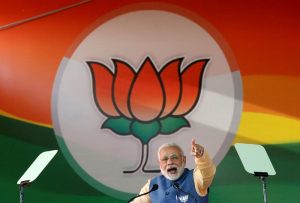






 Listen to the Article
Listen to the Article  Daily Newsletter
Daily Newsletter





